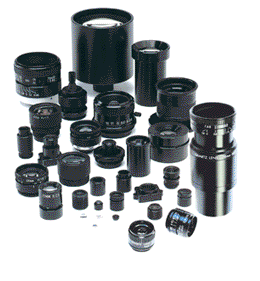High resolution lenses for machine vision — standard and custom lens design
Thermal Imaging Aids In Medical Diagnosis
High Resolution Lenses for machine vision, instrumentation, inspection and vibration-sensitive applications. Standard and custom hi-res lens assemblies.

Thermal Imaging
A challenge that continues to face physicians is the time it takes to diagnosis a patient and formulates a treatment plan. The introduction of thermal imaging through the use of infrared camera systems provide an efficient, effective way to uncover valuable physiological information that can lead toward a diagnosis. Patients welcome the technology as it helps them avoid invasive procedures or exposure to hazardous procedures.
Using a thermal imaging camera to take a scan of children or expectant mothers are examples of the value of thermal imaging in the medical realm. Department of Pediatric Surgery in Austria explain that, “Infrared thermal imaging has been found to be an excellent noninvasive tool in the follow up of hemangiomas, vascular malformations and digit amputations related to reimplantation, burns as well as skin and vascular growth after biomaterial implants in newborns with gastroschisis and giant omphaloceles.” The technology is also a valuable tool in emergency room settings because time is of the essence and a thermal imaging camera aids in rapid diagnosis in ailments such as extremity thrombosis, varicoceles, inflammation, abscesses, gangrene and wound infections.
Physicians use thermal imaging equipment with expectant mothers because the technology poses no risk to the baby or mother. Thermal imaging cameras are also used in breast oncology, neurology, integrative medicine, plastic surgery, dentistry, orthopedics, acupuncture, occupational medicine, pain management, vascular medicine, cardiology and veterinary medicine.
Thermal and infrared digital imaging is not considered solely diagnostic but as a complementary part of a more thorough examination. Thermal imaging does provide physicians with a more precise set of views of a patient rather than a more general view. Consider that the Department of Neurosurgery in Yongdong Hospital, Seoul, Korea wrote, “the areas of thermal change in cervical disc herniation can be helpful in diagnosing the level of disc protrusion and in detecting the symptomatic level in multiple cervical disc herniation patients.” Patients that are not candidates for MRI testing benefit from thermal imaging as an alternative.
From diagnosis through the patient’s progress through therapy and rehabilitation, thermal imaging helps physicians verify the progress being made and the viability of the treatment plan. The diagnostic team to chart progress can sequentially compare repeated images.